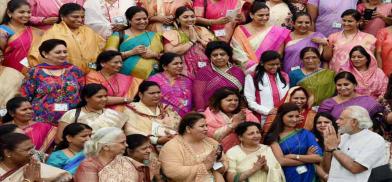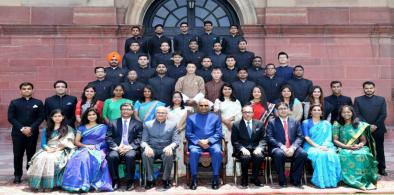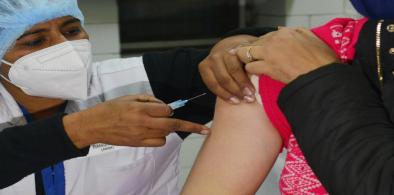Justice for India's women: Against a bleak backdrop, some encouraging developments too
This is an ironic and familiar pattern wherein every March 8, the collective global attention briefly dwells on the status of women and while well-meaning statements are repeated – the substantive improvement in the welfare and safety of women remains a work in slow progress and an area of grave concern, writes Cmde C Uday Bhaskar (retd) for South Asia Monitor

In the run-up to the International Women’s Day (March 8), the national print media had a raft of headlines related to the molestation and rape of the girl child and women that are both tragic and gut-wrenching for the kind of violence and depravity they reflect.
Yet, paradoxically, the last year has seen some tentative but significant progress in the protection of the rights of women and a demonstration of their resolve.
The bleak part first. A report on March 7 in a Delhi newspaper was heart-rending. Tucked away in the inside pages in a single column news report the story title read: “Man gets life in jail for raping minor, flees.” The report from Rajgarh, Madhya Pradesh added that a 23-year old man escaped from a local court ‘moments’ after he was “sentenced to life for raping a paralysed and mentally-challenged minor.”
Violence against women
Similar reports in the national dailies include “Raped at 14, woman files case after 27 years”; “17 years old kills Dalit girl for resisting oral sex”; and the most depressing in my view was “Cops forced women at the shelter to strip, dance?” A recent case of a woman Indian Police Service (IPS) officer in Tamil Nadu allegedly molested by her superior in a moving car while on convoy duty is illustrative of the institutional distortions that are increasing. Clearly, some protectors of the law have now morphed into venal predators.
These tragic and deplorable events are the tip of a murky iceberg and while it is often averred that for a country of 1.3 billion, India has a relatively low number of rapes when compared to the global index, this statistical comparison is of limited relevance. Such conjecture is elliptical justification for a serious and ugly internal security reality and further denigration of women as a constituency.
This is an ironic and familiar pattern wherein every March 8, the collective global attention briefly dwells on the status of women and while well-meaning statements are repeated – the substantive improvement in the welfare and safety of women remains a work in slow progress and an area of grave concern. The COVID year has imposed a further burden on women.
The UN document for International Women’s Day 2021 notes that: “Women of the world want and deserve an equal future free from stigma, stereotypes, and violence; a future that’s sustainable, peaceful, with equal rights and opportunities for all. To get us there, the world needs women at every table where decisions are being made.” This objective is as laudatory as it is unlikely to be achieved in the near future.
For women, being free from violence is a utopian dream and the incidence of female foeticide and the killing of the newborn girl child in India is indicative of the dangers that still lurk. The global MeToo movement underscored a sad truth. No matter how affluent or being part of an advanced modern society, globally women remain vulnerable to sexual exploitation and intimidation and deeply entrenched institutional and societal discrimination. Sustained structural reforms in social norms, legislation, and governance are needed to redress the situation. It will be a long haul.
Role of judiciary
The judiciary, which is the institution of last resort in a democracy that an aggrieved citizen turns to has been often perceived to be less than empathetic to the plight of the woman - at least as seen in some cases.
In this context, two marital violence/rape cases referred to the Supreme Court recently and the queries posed by the bench were reportedly disquieting. As per media reports, in one case, “the Court asked the lawyer representing the accused to find out whether his client would be willing to marry the victim or risk going to jail.”
In another case related to accusations of rape after false promises of marriage wherein the girl was ‘brutally and sexually abused,’ it was reported by the media that a query by the Chief Justice of India (CJI) Sharad A Bobde was insensitive. This reportage, predictably, led to a flurry of outrage and strong editorial comments in the national media.
However, it has since been clarified that the CJI was “completely misreported.” The CJI in his clarification said: “As an institution and as a bench in this court, we have always had the highest respect for the womanhood. This court has always given the largest respect to women.
“We never asked the accused to marry the girl. We asked him ‘Are you going to marry her’. There was complete misreporting of what we said.”
The CJI’s clarification is a very welcome step for the highest court must remain a beacon of justice and hope for the oppressed victim.
A welcome precedent
There are some encouraging developments that merit notice. The acquittal of Priya Ramani in the landmark Priya Ramani versus MJ Akbar (former union minister and editor) case is a symbolically significant victory. It set a welcome precedent that protesting against sexual abuse does not amount to defamation and that the offender, however privileged cannot act with impunity and then sue for defamation.
Allowing women to report rape and violence cases after a lapse of time is also a significant development. In the case referred to earlier, a woman who had been raped as a child (and gave birth) was able to press charges after 27 years. And while the Indian judicial system moves at a glacial pace – in another sensational case, a woman who was gang-raped in Odisha when she was 19 years found some solace after 22 years. The hand of the law persevered and the main perpetrator was found near Navi Mumbai in Maharashtra.
The deliberate misuse of legislation and the framing of false charges against men cannot be ignored either but for India, the ‘beti bachao’ (save the girl child) campaign has to be a continuous 24/7 vigil.
Daughters must be able to stay at home, go to school or the workplace or enter wedlock without the constant fear of being easy prey for casual gratification. Every day ought to be a safe day for women globally.
(The writer is Director, Society for Policy Studies - SPS. The views are personal)













Post a Comment